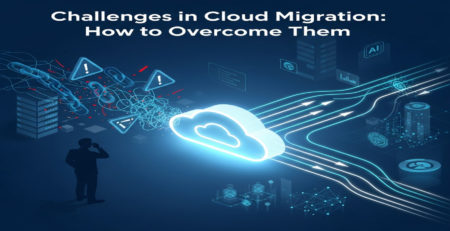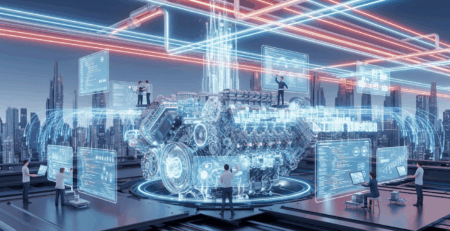The Best Customer Service Software Solutions for 2025 (U.S. Edition)
DSSP2025-11-20T13:26:42+00:00INTRODUCTION:
If there’s one thing I’ve learned working with massive tech ecosystems like Intel and Google, it’s that customer expectations don’t just evolve, they accelerate. Every year, the bar rises higher. People want faster responses, clearer communication, and service that feels less like “support” and more like a personal concierge. And the truth is, no human team can deliver that kind of experience at scale without the right technology behind them. That’s why customer service software has become the backbone of modern customer experience strategy. It’s not just a tool anymore; it’s the machine that keeps businesses running smoothly, consistently, and intelligently.
Now that 2025 is here, customer service software has reached a new level of sophistication in the U.S. market. We’re not talking about basic ticketing systems or simple help desks anymore. Today’s platforms use AI to predict what a customer needs before the customer even knows it. They connect every communication channel into one unified view so nothing gets lost. They automate repetitive work so support agents can focus on complicated issues. And they turn customer interactions into data that companies can use to make smarter decisions. This next generation of customer service software isn’t just reacting it’s anticipating, learning, and evolving.
As someone who’s studied product design, UX workflows, and enterprise support models for years, I can tell you one thing with absolute confidence: the companies that invest early in the best customer service software always end up ahead of the ones that wait. Customer experience is the new battlefield, and software is your weapon. And with so many tools crowding the market, it can feel overwhelming to pick the right one. That’s exactly why I’m breaking this down for you in a way that feels human, digestible, and real. Because choosing the right customer service software in 2025 isn’t just a tech decision it’s a business survival strategy.
Why Customer Service Software Has Become Non-Negotiable in 2025
Let’s be honest. Customer expectations in the U.S. are no joke. People want fast, friendly, personalized, and consistent service every single time they interact with a brand. They don’t care about your internal processes. They don’t care if your support staff is overloaded. They don’t care what your software limitations are. All they care about is how quickly and effectively you solve their problem.
This pressure has pushed companies to adopt customer service software capable of keeping up with real-time demand. When your customers can jump from phone to chat to email to a self-service portal in minutes, your system needs to automatically unify all those interactions. If your team is dealing with hundreds or thousands of support inquiries, your platform has to automate repetitive tasks, suggest answers, categorize requests, and route issues to the right people. And if your business wants to stay ahead, your software must collect data that helps you make smarter decisions moving forward.
Customer service software used to be optional. Today, it is the infrastructure that keeps the entire customer experience ecosystem intact. Without it, you’re flying blind.
The Evolution of Customer Service Software in the U.S. Market
It’s wild to see how far customer service software has come in just a few years. Back then, support tools were clunky, slow, and reactive. They handled tickets one by one, without context, without intelligence, and without any kind of personalization. But now? The U.S. customer service landscape has become a breeding ground for innovation, fueled by AI, automation, cloud scalability, and integrated experience design.
Modern platforms don’t just process support queries they understand them. They don’t just answer questions they anticipate patterns. They don’t just store information they analyze it and recommend improvements. And they don’t just help customers they empower internal teams to work smarter instead of harder. Customer service software is transforming from “support system” to “strategic business engine,” and companies that fail to recognize that will struggle to compete in 2025 and beyond.
What Defines the Best Customer Service Software in 2025
This year feels different because the expectations are different. A great system today must be fast, intuitive, scalable, and intelligent. It must blend AI with human support. It must offer integrated communication channels, lightning-fast search capabilities, predictive analytics, and automation that feels natural rather than robotic. Most importantly, the best customer service software has to make the customer feel like they matter.
Across my years helping teams evaluate tools for both global enterprises and growing SaaS companies, I’ve noticed one constant truth: the customer service software that wins is the one that empowers human agents, not replaces them. It amplifies their abilities. It takes away the repetitive tasks that drain energy. It provides them with context so they can make smarter decisions. And it gives them a system that feels as intuitive as using a smartphone rather than fighting with endless menus and tabs.
To stand out in 2025, customer service software must deliver three things flawlessly: speed, personalization, and seamless experience. If any of those pieces are missing, customers feel the friction instantly.
How AI Has Completely Reshaped Customer Service Software
I’ve never seen a technology change the customer service world as dramatically as artificial intelligence has. AI took what used to be slow and reactive, and turned it into something proactive, efficient, and unbelievably smart. Today’s AI-powered customer service software predicts customer behavior, analyzes sentiment, prioritizes issues, and even drafts real-time responses for agents. And it isn’t replacing human support it’s supporting human support.
AI is also what allows 2025 platforms to scale effortlessly. Whether you’re getting five inquiries a minute or five thousand, intelligent automation ensures nothing gets lost. It handles the repetitive work, the basic troubleshooting, and the common questions so your support agents can focus on real human problems. And as someone who’s lived in enterprise-level workflows, I can promise you this: the difference between teams with AI-powered customer service software and those without is night and day.
Modern AI isn’t just helpful it’s transformative. It changes how fast businesses respond, how accurate they are, and how personalized each interaction becomes.
Why Omnichannel Support Matters More Than Ever
Customers in the U.S. don’t just contact companies one way anymore. They jump between text, email, chatbots, live chat, phone calls, social media, and help center portals depending on their mood or urgency. If your customer service software can’t unify all those channels into one seamless journey, things fall apart fast.
The best platforms in 2025 give both customers and agents a single experience that feels clean, connected, and consistent. When someone starts a conversation on chat, your system should show the entire history. When someone emails you after calling earlier, the context should carry over automatically. When someone checks your self-service center, the suggestions should match their previous interactions. That’s what omnichannel really means, and it’s one of the biggest reasons customer service software has evolved so aggressively.
This kind of seamless communication doesn’t just improve support outcomes it builds trust. And trust is what keeps customers loyal.
Why Data Is Now the Heart of Customer Service Software
Companies used to guess what their customers wanted. Now the data speaks for itself. Every conversation, every complaint, every request becomes a data point. And the best customer service software turns all of that into insights that can reshape your business. It shows you trending issues before they explode. It helps you improve your product. It shows where your service is slow. It highlights where your customers feel misunderstood. It turns feedback into strategy.
The smartest companies in the U.S. are using customer service software not just to respond to problems but to prevent them. The data tells you what’s happening, why it’s happening, and how to fix it. And once you start making decisions based on real customer behavior instead of assumptions, your entire business starts evolving naturally.
Choosing the Best Customer Service Software for Your U.S. Business in 2025
Selecting the right customer service software isn’t about picking the most famous brand. It’s about choosing a platform that fits your business model, your communication style, your team’s workflow, and your growth goals. What works for a giant enterprise with 5,000 agents won’t work for a startup with 10 employees. And what works for an e-commerce brand might be completely wrong for a healthcare or fintech company.
The best customer service software in 2025 is the one that understands your industry, scales with your operations, and makes support feel natural rather than forced. It should simplify your life, not complicate it. It should make your agents faster, not slower. It should make your customers feel valued, understood, and heard.
Teams that choose the right software perform better. They communicate better. They solve problems faster. And they create customers who stick around for the long haul.
Final Thoughts: Customer Service Software Is the Future of Customer Experience
If there’s one conclusion I’ve reached after working with world-class tech environments, it’s this: customer service software is the foundation of modern customer experience. Without it, companies crumble under pressure. With it, they grow faster, respond smarter, and build relationships that actually last.
In 2025, customer service software is more than a system. It’s the customer’s first impression. It’s the agent’s right hand. It’s the executive’s source of insight. It’s the operational backbone that keeps everything running smoothly. And the businesses that master this technology are the ones that will dominate their industries in the U.S. market.
Customer expectations will continue rising. Competition will keep getting tougher. And the companies that win are the ones that put customer experience at the center powered by the smartest, fastest, and most intuitive customer service software available.









Leave a Reply